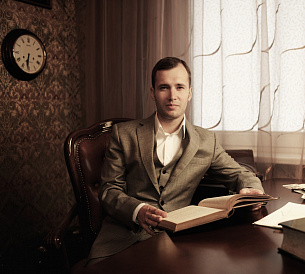14 best books about the universe and space
We live in a time when everyone can see the most beautiful photos of distant galaxies, look beyond the limits of the mysteries of space and learn the latest news from the world of astronomy. Astronomers constantly record data about black holes, new planets, gravitational waves, dark matter, and other intriguing mysteries of the universe. In many ways, these discoveries are based on echoes of the theories that Einstein developed in the last century. What has changed in more than 100 years? Perhaps we are on the verge of grand cosmic discoveries?
How does the universe work? What are black holes? Why are there no boundaries from space? Will anyone dare to colonize Mars? You will get detailed answers to these and many other questions after reading books on space and the Universe from our rating.
Ranking of the best books about the universe and space
| Nomination | a place | Name of product | price |
| Ranking of the best books about the universe and space | 1 | Einstein Cosmos, Michio Kaku | 502 ₽ |
| 2 | No space visible from space, Ron Garan | 702 ₽ | |
| 3 | Interstellar Science behind the scenes, Kip Thorn | 2 053 ₽ | |
| 4 | About the Universe in a nutshell, Stephen Hawking | 1 284 ₽ | |
| 5 | Reaching out to heaven, Lisa Randall | 597 ₽ | |
| 6 | Guide astronaut on life on Earth. What 4,000 hours in orbit taught me, Chris Hadfield | 470 ₽ | |
| 7 | A brief history of time, Stephen Hawking | 588 ₽ | |
| 8 | The path to the stars. From the history of Soviet cosmonautics, Anatoly Alexandrov | 104 ₽ | |
| 9 | How we will live on Mars, Stephen Petranek | 120 ₽ | |
| 10 | Cosmos, Dmitry Kostyukov and Zina Surova | 714 ₽ | |
| 11 | Space. Evolution of the Universe, life and civilization, Karl Sagan | 413 ₽ | |
| 12 | Exploration of distant planets, Vladimir Surdin | 1 523 ₽ | |
| 13 | Grand Atlas of the Universe, Irina Pozdnyakova | 1 238 ₽ | |
| 14 | Superobjects. Stars the size of a city, Sergey Popov | 517 ₽ |
Cosmos Einstein, Michio Kaku
Rating: 4.9
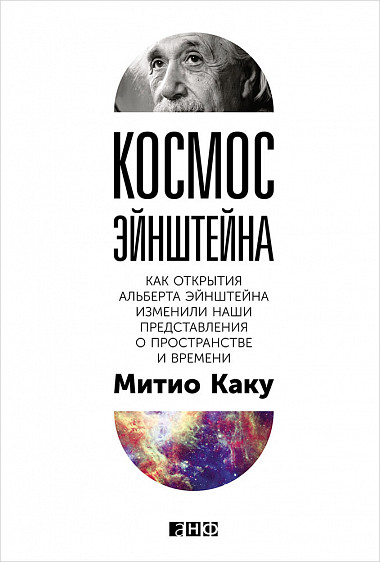
The rating is opened by the book "Cosmos of Einstein", written by a theoretical physicist, Ph.D., teacher at New York College and a writer in one person. Michio Kaku has taken on the role of popularizing scientific discoveries about the universe, or rather their invisible side. The book "Einstein's Cosmos" is not a scientific manual with a thousand formulas, not Einstein's biography and not a mean statement of the theory of physics. This work is for those who do not consider themselves to be an expert in exact sciences, but wants to understand how grand discoveries are made and how epochal theories are born.
Michio Kaku answers the main question: how did Einsheinu, whom the teachers did not give a single chance to receive a minimum education, still managed to make a revolution in the field of physics. How he was able to achieve universal recognition, despite the fact that many contemporaries were quite critical of both the personality and the scientific works of the creator of the theory of relativity.
The book takes us into the atmosphere of the early 20th century - during the two world wars and the development of the atomic bomb. The author clearly demonstrates to the reader what lies behind the scenes of great events in science and what, sometimes difficult, stages scientists have to overcome in order not only to make their own small discovery, but also to present it to the public.On the pages of the book we find an interweaving of interesting facts from the life of Einstein and his colleagues with a description of the theory of relativity in a language that even a child can understand. This is the secret of the popularity of the books of Michio Kaku - he writes simply about the complex. For the sophisticated mind, this book may seem too elementary, but for the humanities it will be a vivid excursion into the incomprehensible, until this moment, world of physics.
No space visible from space, Ron Garan
Rating: 4.8
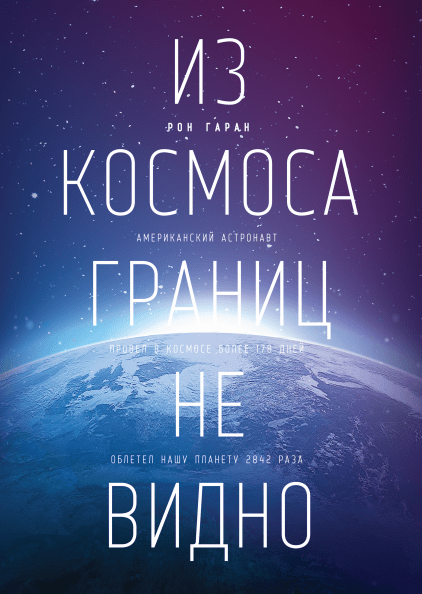
The saga about the Universe, space, world, unification and humanity is placed on the second position of the rating. The book "From Space No Boundaries" is a book about the Earth, not about the cosmos. From the first to the last page is a call for unity for the preservation of humanity. The author is Ron Haran, an American astronaut who, during his long stay in outer space, was struck by the beauty of our blue planet.
The author tells about the so-called "orbital point of view" - a look at the Earth without boundaries from space. With this type of observation, neither military conflicts, nor divisions, nor states, nor nations, nor religions can be seen. The whole Earth appears as the only big house at once for all mankind. And that is exactly the way Ron Haran calls for it. Just abandon the prejudices associated with artificial divisions, and unite the whole world in order to solve today's problems - hunger, poverty, climate disasters.
Ron sure if specialists of 15 nationalities can unite, being outside comfortable conditions. Together, they can implement very complex joint projects for the benefit of all, while working on the construction of the MIR orbital station, the same can be done by people on Earth. This book is not for everyone. But it will definitely affect the hearts and minds of true altruists and all those who care about the fate of humanity. The book was published not so long ago - in 2015, but already managed to become popular both in the United States and beyond.
Interstellar Science behind the scenes, Kip Thorn
Rating: 4.7
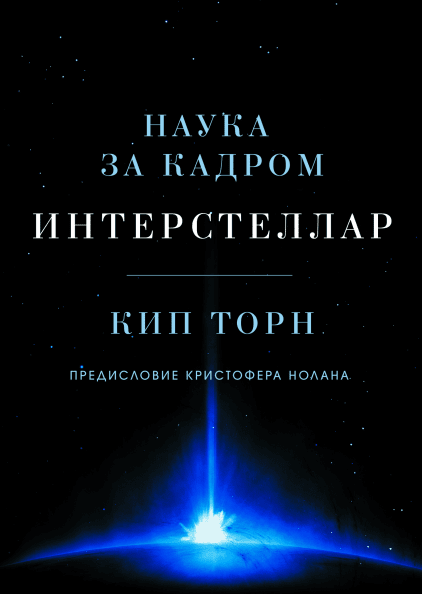
The third place in the ranking remains for the work “Interstellar. Science behind the scenes ”Kip Thorn - the famous theoretical physicist, Nobel Prize winner and consultant to the acclaimed movie Christopher Nolan“ Interstellar ”. On the pages of the book, the author makes a kind of scientific journey to such concepts in astrophysics as black holes, gravity, the fifth dimension, and other phenomena, illuminated in the same film. At the same time, in his book, Kip Thorn demonstrates that the incredible and sometimes amazing physical events, first presented in motion pictures and never previously shown visually, are based on real physical theories of modern times.
The plot is divided into several parts. Initially, the author talks about preparing for the shooting of the film. Then he goes on a short digression on the laws of the universe, the curvature of time and space, black holes. After that, it goes deep into scientific research, moreover strictly within the framework of the plot of the film, shot earlier. All this is accompanied by photographs from the film, illustrations, diagrams and other visual pictures. But this is not a boring textbook on entertaining physics. The author is so enthusiastic about space phenomena that the book will appeal to both adults and adolescents, because this is a great opportunity to make an exciting space journey without getting up from the couch.
About the Universe in a nutshell, Stephen Hawking
Rating: 4.6
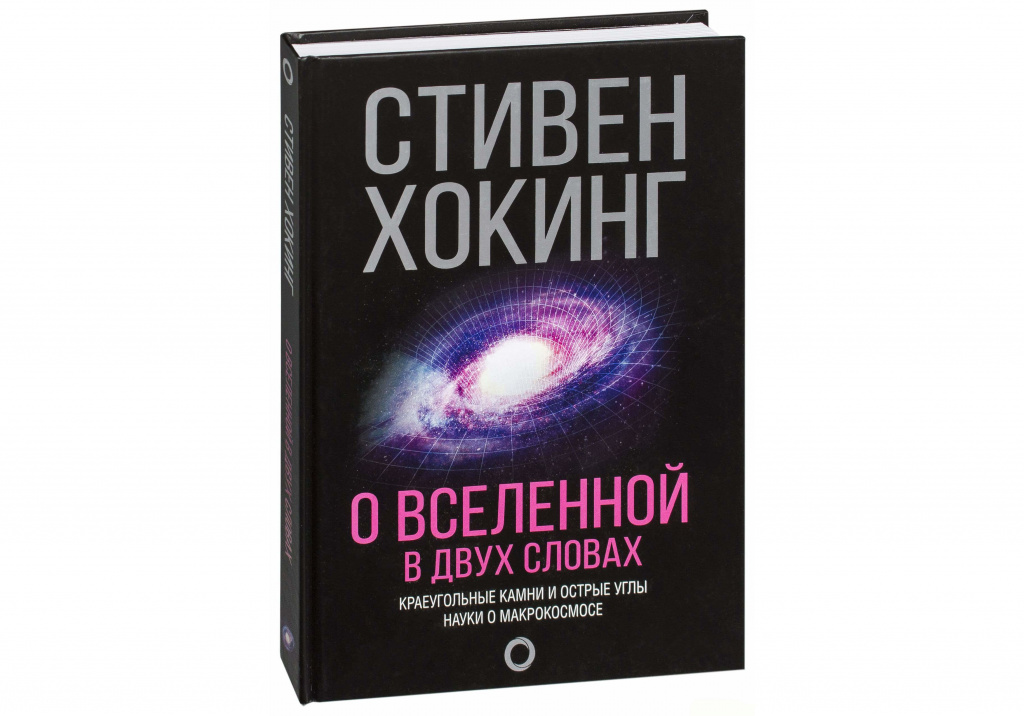
The book "On the universe in a nutshell," the world-famous English theoretical physicist Stephen Hawking takes the fourth step in the ranking. Hawking is famous, above all, for his work in the unknown area of studying quantum cosmology and popularizing black holes. He also headed the same department in Cambridge as Isaac Newton did.
In his books, Hawking uses simple language that is understandable even to non-professionals.He literally on his fingers explains the principles of interaction of quantum mechanics and physics, simultaneously revealing the meaning of time travel, the possibility of the formation of black holes, thus substantiating Ainshein's theory of relativity and calling it the "theory of everything." The book "On the Universe in a nutshell" tells about discoveries, innovations and new postulates made in physics. The author set himself the task: to solve what Einstein was still thinking about - to unite two disparate theories - quantum mechanics and the theory of relativity into the Unified Field Theory and lead to the general law of the universe. Perhaps, for those who are completely unfamiliar with physics, the book will be difficult to understand, so we can recommend it to those who are at least familiar with the advanced course of physics. 4 years ago, the book has already been published, titled "The World in a Nutshell".
Reaching out to heaven, Lisa Randall
Rating: 4.5
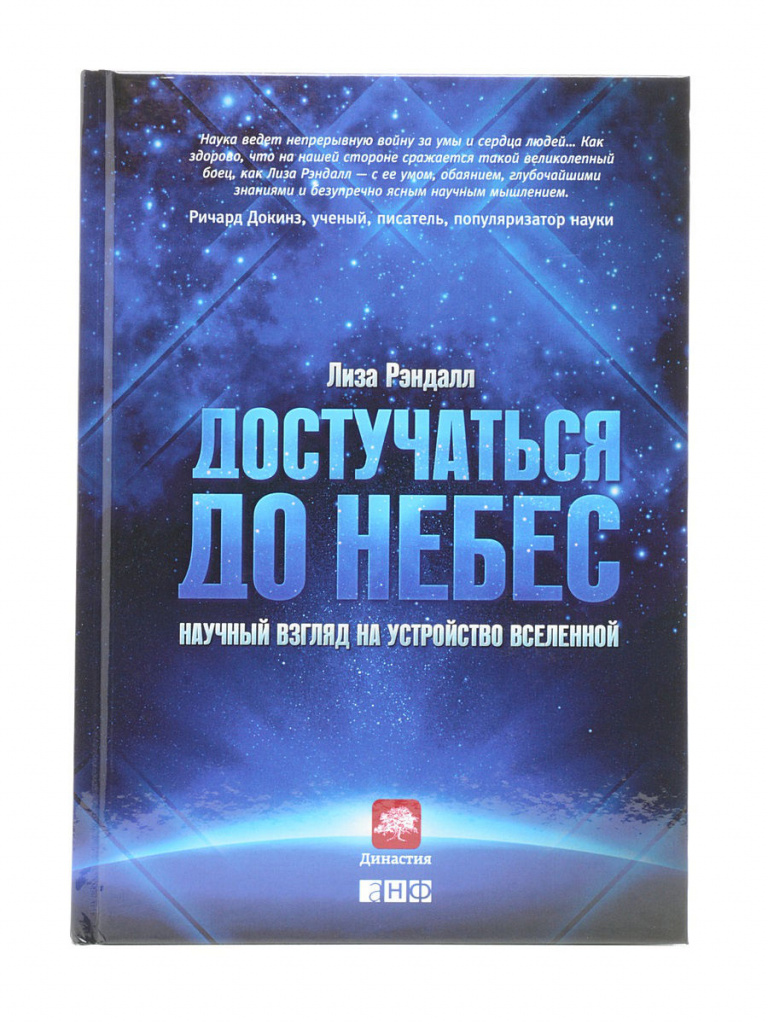
The book from the popular author Lisa Randall falls on the fifth step of the rating. This scientific work is distinguished by the fact that the author, trying to explain the phenomena that her colleagues have already spoken about more than once, uses a purely feminine vision. She manages to note occasional, but very unusual observations. After reading the book, you can really expand your understanding and learn a lot in particular from the field of elementary particle physics. After all, according to the author himself, even the smallest objects are able to give us an understanding of who we are and where we came from.
As a professor of theoretical physics at Harvard University, Lisa Randall writes about the general state of science from the perspective of quantum mechanics. More than half of the book is devoted to the construction, design and experiments conducted at the Large Hadron Collider. The book is a bit lacking vitality, humor and ease of presentation. It is noteworthy that it was written before the Higgs boson was found. The author is waiting for those discoveries that should happen after the launch of the collider. In general, the book "Reaching the skies" is a sample of good popular science literature, but no more.
Guide astronaut on life on Earth. What 4,000 hours in orbit taught me, Chris Hadfield
Rating: 4.4
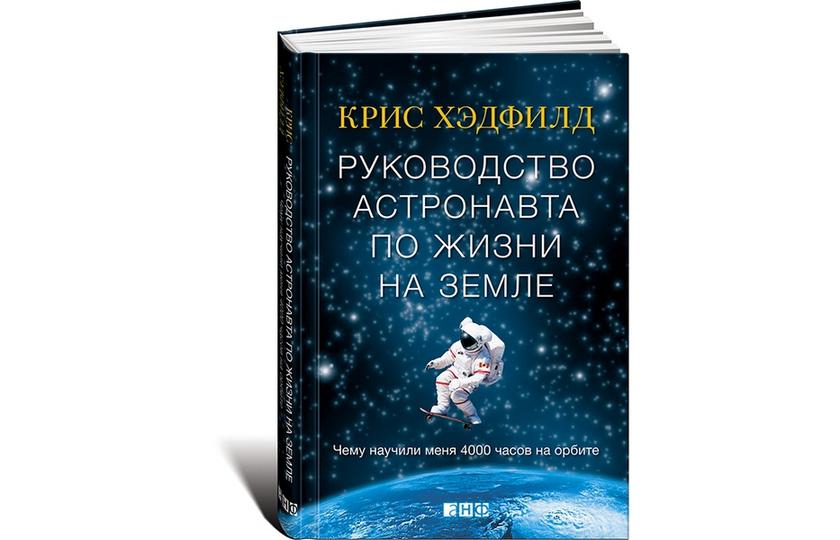
Chris Hadfield, an American astronaut who spent 4,000 hours in orbit, subsequently wrote a remarkable book that ranks the sixth in our ranking. While in space, Chris Hadfield was not only able to work for the benefit of all mankind, but also, being in near-Earth space, he shot many videos about orbital life, the work of astronauts. While on the ISS, he even sang his song and filmed a video clip, which quickly went online and scored multi-million views. After returning from space, Chris decided to publish a book in which he shared his long journey to space, the fulfillment of a dream and the invaluable experience gained during this time.
In the first part of the book, the author shares how his path to a space career began. The reader will learn about childhood, dear people and just good friends, and about those milestones that preceded future events. The second part describes in detail the flight into space and cooperation with Russian astronauts. Especially the American astronaut notes funny, in his opinion, "Russian traditions" of colleagues. The final part tells about the heavy rehabilitation after landing and ending a career. Watching the earth from space, Hadfield realized how beautiful our planet was. In his folio, he now and then calls for the protection of nature and the feelings of his loved ones.
A brief history of time, Stephen Hawking
Rating: 4.4
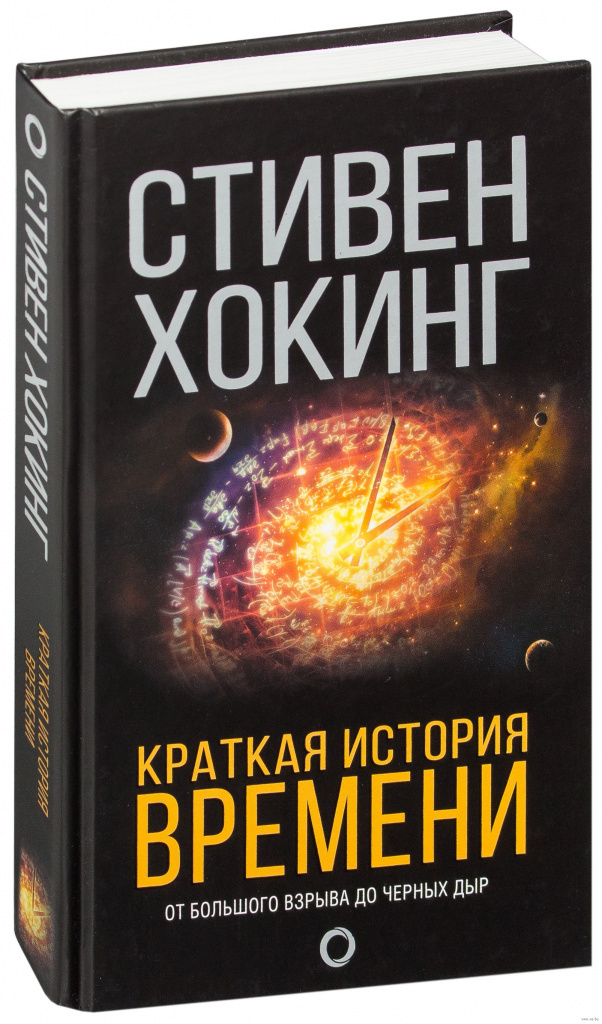
Stephen Hawking's book A Brief History of Time: From the Big Bang to Black Holes is in the seventh position in the ranking. This story is devoted to a detailed search for a global answer to a complex question: “What choice did God have when creating the Universe?” In which Einstein was also interested in his time.Hawking deliberately refuses to include complex formulas and calculations, realizing that they will reduce the number of people willing to purchase his books. He tries in an accessible language to present the ideas of the quantum theory of gravity. The first time the book was published in 1988 and quickly became a real bestseller. Over the next 20 years, more than 10 million books have been sold.
In addition to natural science substantiations and terms, the book contains religious and philosophical arguments. Stephen Hawking asks a question: how was the Universe and space created? Could it have been formed by chance or was it created by God? And although the reader will not find the final answers to these questions, he will be able to look a little further than usual and delve deeper into the unknown secrets of the surrounding world.
In 1991, the film of the same name was shot (dir. Errol Morria), but the plot was not based on a book, but on the biography of a scientist, his achievements in science. Hawking's book is mentioned in works such as Harry Potter, Love Through Time, Donnie Darko and others.
The path to the stars. From the history of Soviet cosmonautics, Anatoly Alexandrov
Rating: 4.3
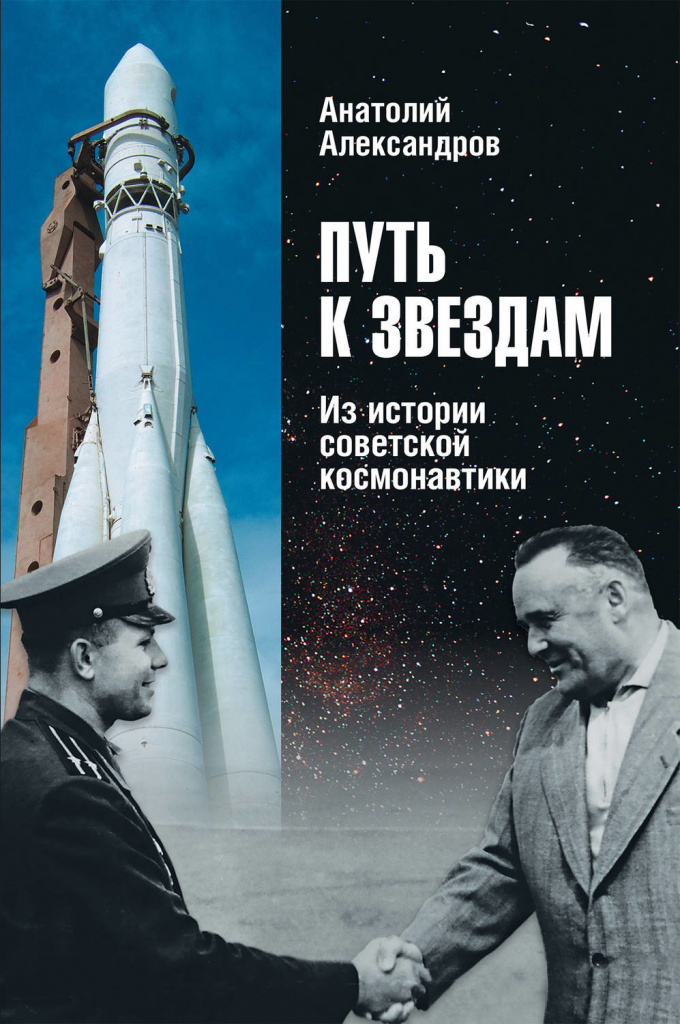
How is life at the cosmodrome? This book will tell A. Alexandrov's book "The path to the stars", located on the eighth stage of our space rating. Working for many years in the rocket-building area, the author placed in one book hundreds of interesting stories about the preparation of rockets for launch, the fate of the “lunar project”, and personal impressions. The book covers the time period from 1944 to 1971. It was the time of Soviet cosmonautics, its formation and origin. After the launch of the first satellite, and the first manned flight into space, there was a lot of trial and error, and the space program often literally hung in the balance from closing.
The book is based on little-known or completely unknown episodes that occurred during the space race, which will certainly interest the sophisticated reader. Plunging into story stories, you become a silent witness of real events, you communicate with a lot of people who are mostly unknown to the general public.
Another parallel line of the book is the description of the history of the rocket forces, although in other works these topics are separated from the projects of the peaceful conquest of space. This allows us to understand many of the origins of what is happening, in terms of the true context, and not external judgments. The book will especially appeal to those who are truly interested in the national space program.
How we will live on Mars, Stephen Petranek
Rating: 4.2
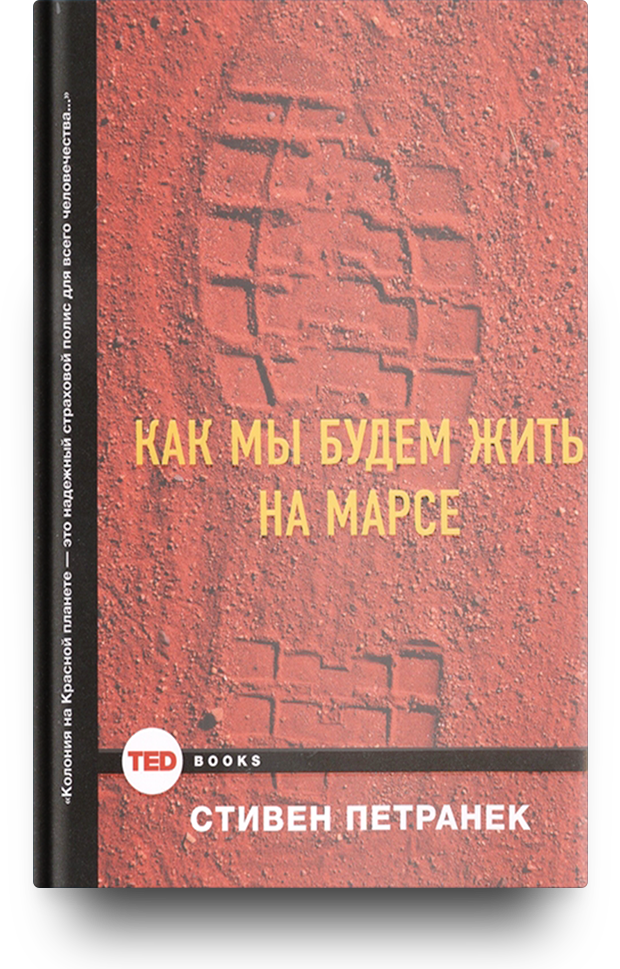
Having become infected with the idea of promoting life on Mars, a journalist and writer, as well as the chief editor of the popular magazine Discover Magazine, Stephen Petranek published a book in 2015 entitled How We Will Live on Mars. She ranks ninth in our ranking.
After the success of the lecture for TED, Stephen Petranek decided to publish a book for the general public on this popular topic. The 17-minute presentation was placed on just 128 pages, 32 of which are illustrations. Yes, the book is a very small format and more like a detailed scientific article, but still deserves attention.
The first part focuses more on financiers, because here we are talking about earnings, numbers, volumes, amounts. The second half is replete with facts, ideas and theories. The author tries to consider the problem from several sides and believes that the early colonization of Mars will open up new perspectives in commercial human activity. Steven enthusiastically assures that people have no other way than to begin actively exploring outer space. Well, time will tell whether the first colony of people who have bought a one-way ticket for a fabulous sum can land on Mars by 2025-2030, as Stephen Petranek promises us.
Cosmos, Dmitry Kostyukov and Zina Surova
Rating: 4.1
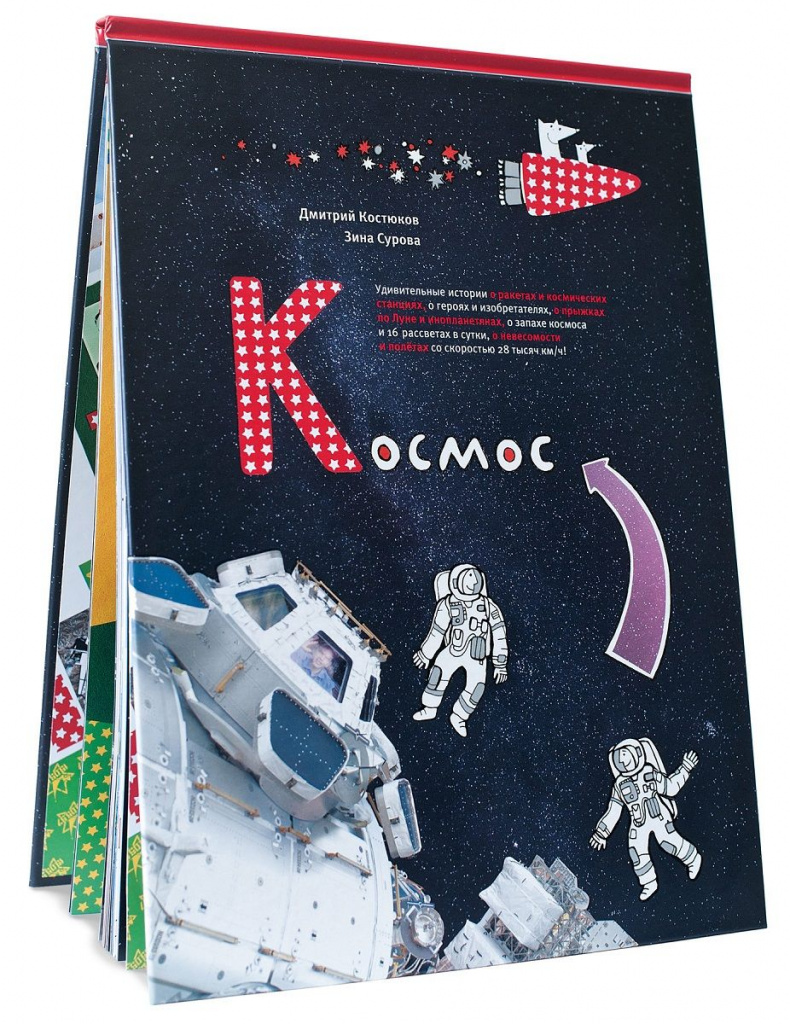
About space - for children! A bright, hand-illustrated, space book lands on the tenth position in the ranking.This funny book with color illustrations for children will tell about space flights, the ISS device, the main cosmonauts and famous rocket-planners, the designers - Gagarin, Korolev, Tsiolkovsky, Leonov, Titov.
The little ones will learn what the cosmodrome is and how it works, how the first space rockets and ships appeared, how astronauts tune in and train just before the flight. The main outline of the book includes real interviews and photographs from personal archives collected by the “cosmic” photographer Dmitry Kostyukov.
Despite the fact that the circulation of the edition was only 3000 copies, the book received many awards: the diploma “Art of the Book”, the award “Start Up”, White Ravens from the library in Munich, the prize in the competition “Gagarin and I” by the British Council.
Space. Evolution of the Universe, life and civilization, Karl Sagan
Rating: 4.0
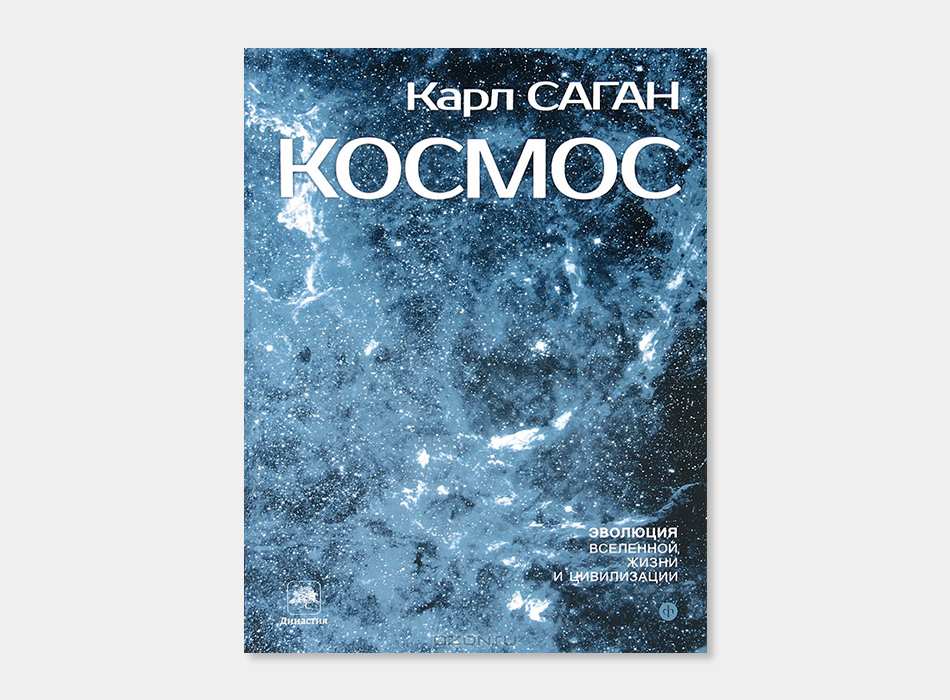
The book about the space of Karl Sagan, which came out more than 35 years ago, but is still relevant and interesting, is on the eleventh position of the rating. The book was first published in the distant 1980, but was translated and published in Russia only in 2004. Such a huge gulf can be explained by many reasons. And although over the years many things have changed in space exploration, much has been discovered and it became known, the basic concept remains the same. However, the book can not be called purely scientific or technical. Rather, it is a philosophy intertwined with physics and cosmology, where the origin of civilization in different parts of the Universe is narrated.
The main idea of the book is traditionally devoted to the big bang theory, how life began, how some elements, once exploded, formed other elements that gave rise to life for the third elements ... In other words, all that we see around is a child of Cosmos, as some reasonable substance which spawned itself. And although new discoveries by scientists are increasingly indicating that an invisible hand is present in the creation of the world, this book is an excellent example of classical physics of the last century.
"Space. The evolution of the universe, life and civilization ”was published in addition to the television series“ Cosmos: a personal journey ”, so there are exactly thirteen chapters in it, according to the number of episodes of the film. By the way, this book, for more than 70 weeks, was on the bestseller list and became the best-selling scientific book in the 80s, and Karl Sagan during this time gained fame and fame comparable to the stars of show business.
Exploration of distant planets, Vladimir Surdin
Rating: 3.9
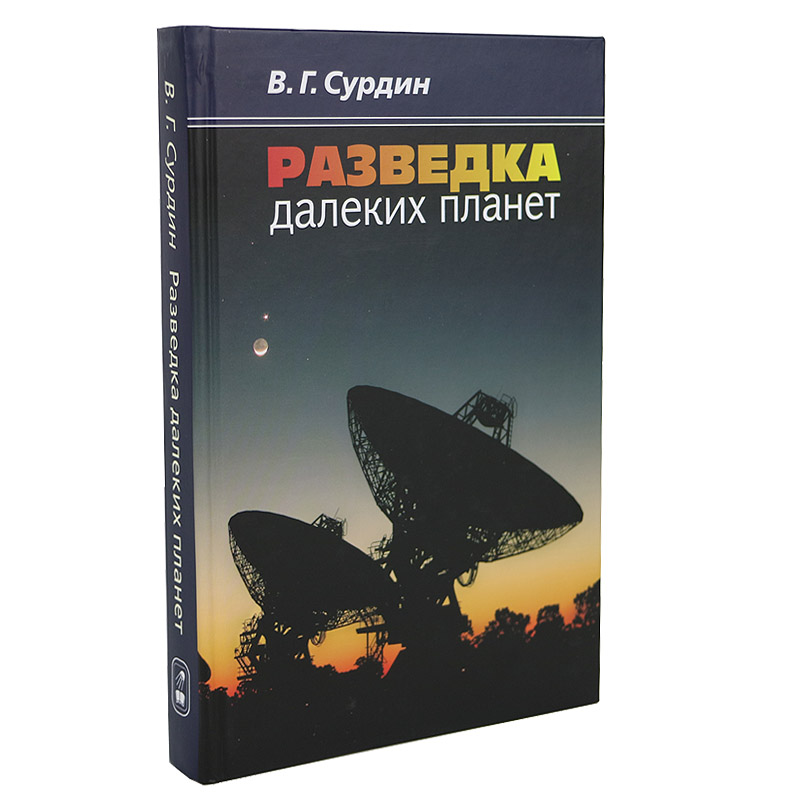
The book about planetary hunters “Exploration of distant planets” by Vladimir Surdin occupies the twelfth step of the rating. Doctor of Physical and Mathematical Sciences and a senior researcher at the Institute of Astronomy talks about how new planets are being discovered, what are the peculiarities, difficulties and paths. Without being carried away by complex words and specific terminology, Surdin leads to the idea that every fan can find and discover his own planet and leave a noticeable mark on the history of space exploration.
The book begins with the most basic things - the story of the planets and constellations. When the reader comes to more technically difficult moments, for example, with a description of the device of the telescope and tips for its choice, there is a desire to understand everything in more detail. As a last resort, the reader can skip this moment and move on to what rules call space objects, what interesting facts and hypotheses accompany these events. And most importantly, after reading the book, there is an understanding that not only professional astronomers can make discoveries of the planets. This can be done by amateurs who have good optics at their disposal.
Grand Atlas of the Universe, Irina Pozdnyakova
Rating: 4.8
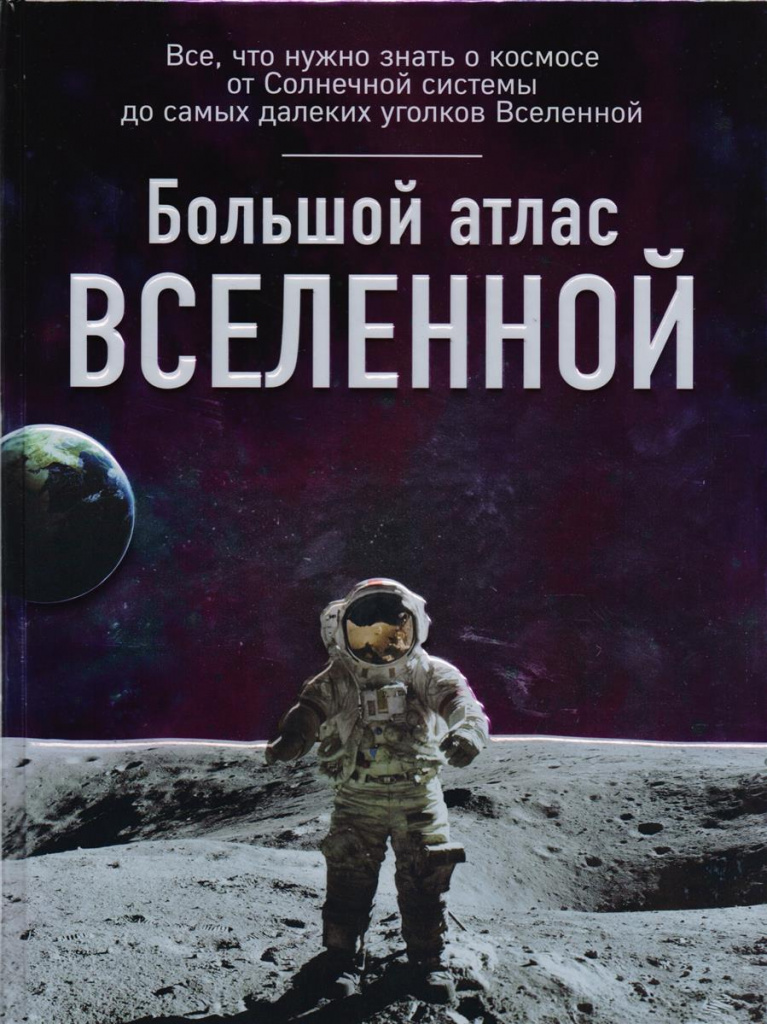
The book about the Universe and its secrets from Irina Pozdnyakova is on the penultimate, thirteenth stage of the rating. Atlas is a concentrated bunch of data about the device of the Universe.This is a unique guide in which the entire Solar System is shown step by step.
Irina Pozdnyakova is an amateur astronomer, since 2005 she has been published on various Internet portals devoted to the topic of space and is the author of 8 books. The book “The Big Atlas of the Universe” was released in 2017 in a gift edition. It shows in detail the main objects of our Universe, paid special attention to their physical nature. At the end of the atlas, you can find maps of the sky and begin to practice exploring the distant cosmic constellations. For lovers of astronomy, the book can be a wonderful gift or a collection item. The only drawback is its cost, which exceeds 1000 rubles.
Superobjects. Stars the size of a city, Sergey Popov
Rating: 4.8
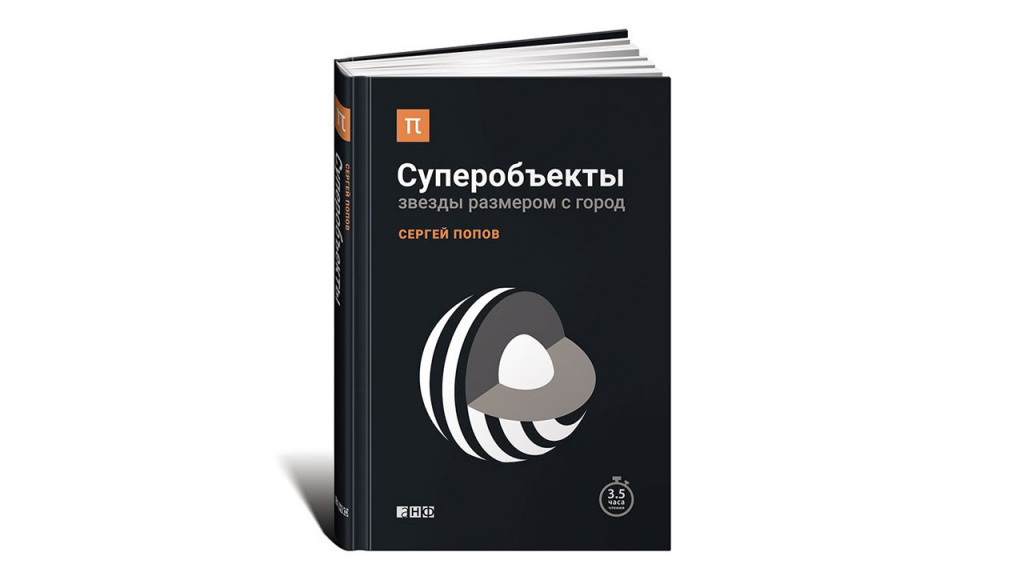
Our rating is completed with a book about interesting objects - neural stars that excite the minds of many scientists. Sergey Popov, a well-known popularizer of science and a learned astrophysicist, seeks to expand readers' knowledge of the field of education and the existence of heavy superobjects directly connected with black holes.
The main feature of the book: the author decided in one edition to tell all that he knows about this topic. Most of the information is intended for a prepared reader, so for some readers this book, which is far from astrophysical topics, may seem boring and lengthy for readers. Although there are funny examples and contrasts on the pages, this does not save the narration from excessive scientific knowledge. Especially the book on superobjects will appeal to those who are deeply interested in new scientific discoveries.
Attention! This rating is subjective, is not advertising and does not serve as a guide to the purchase. Before buying, you should consult with a specialist.





